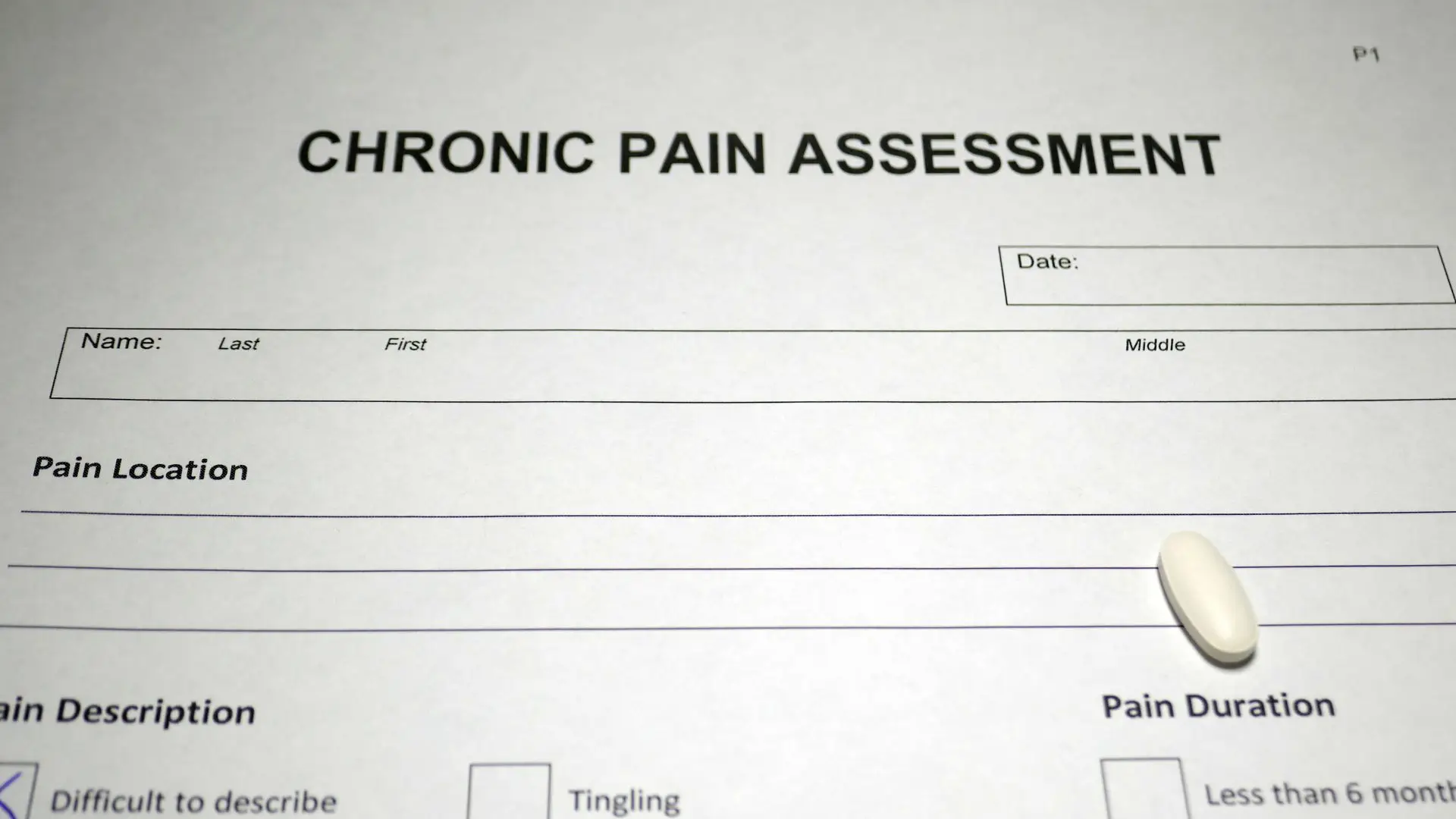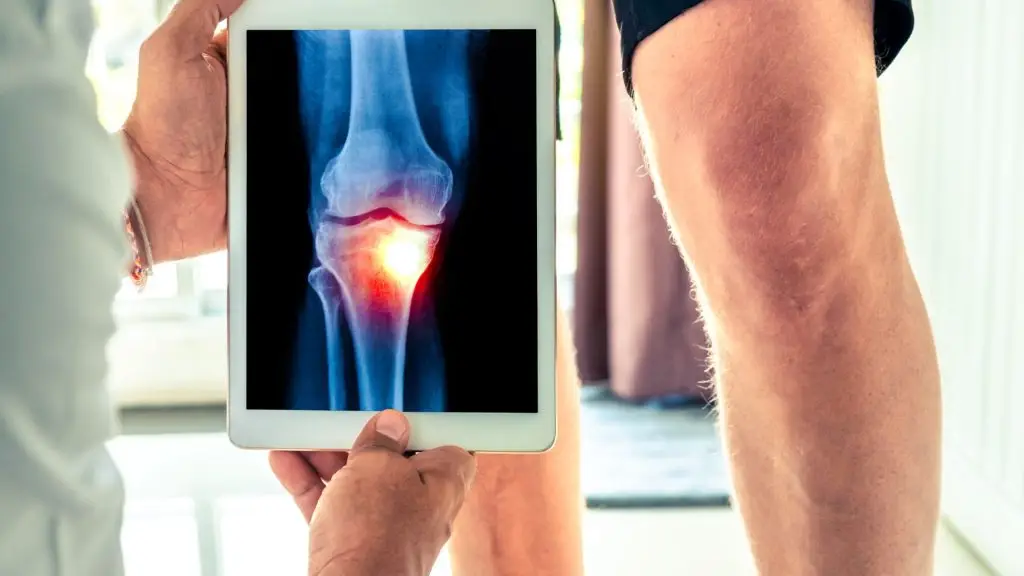What Is Chronic Pain?
What Is Pain?
The central nervous system is made up by the brain and the nerves within the spine. Spinal nerves send out messages to the brain, letting it know if something is happening in the body. After receiving these messages, the brain becomes responsible for acting on this information, and is therefore like a control center.
It is the interpretation of this information by the brain that brings about the sensation of pain. Sometimes, the brain may misinterpret the signals and may send out a signal of pain even when there is no source or reason to feel pain.
Normally, we would expect the pain to subside on its own with time. However, sometimes the brain keeps firing out pain signals when there is no physiological reason for doing so.
These signals are often strong, seem to come for no apparent reason, and are hard to suppress. Whatever their origin, they are perceived as pain by the patient.
How Chronic Pain Is Different
The nature of ‘chronic’ itself suggests that pain, by definition, carries on for longer than 12 weeks and does not respond to treatment or medication. To different people, chronic pain means different things.
It can be compared to a fire with sharp electrical pain running down one of your limbs or throughout your whole body. Chronic pain may also manifest itself as a dull ache, throb, tautness, and stiffness of the joints.
Chronic pain conditions will remould your skin into something shiny, scaly, reddened, raw. It goes pale, almost translucent, easily damaged. Very tender to the lightest touch or breath.
It knows no boundaries—it is anybody, anytime in life. Be it after an injury or an operation, it at times just develops uninitiated. You may or may not be living with chronic pain but may be watching your friend, partner, child, or relative live with chronic pain.

What Are The Different Types Of Chronic Pain?
There are different chronic pain types that relate to separate sources. Each form can uniquely affect a person. The knowledge of the type of chronic pain that the individual has may give insight into the line of treatment. In general, each type of chronic pain might be the result of several subtypes or nuances, which seek an individualistic approach in caring for the conditions.
Some common types:
Neuropathic Pain
Neuropathic pain is a very complex kind of chronic pain with its roots in damage or malfunction within the nervous system. Because it differs from usual pain, which is an alert warning in response to an injury and subsides as tissues heal, some are keen on referring to it as a disease.
These unique pains are the result of damage or changes to nerves, which cause improper signaling between them and the brain. It can be caused by diseases such as diabetes, infections like shingles or HIV, traumatic injuries to nerves, autoimmune diseases like MS, and even side effects of medications.
Neuropathic pain varies immensely in different patients and engulfs a sense of burning, shooting, stabbing, or electric shock-like feelings. These feelings mostly occur without warning and quite spontaneously, which would mean that there might not be any apparent external stimulus through which this pain occurs.
Diagnosis of neuropathic pain is built on a history taken regarding the symptoms, a physical examination, a medical history, and specialized tests such as nerve conduction studies or imaging studies that will help identify damages in nerves or malfunctioning.
In most cases, neuropathic pain requires complex management. These may involve medications such as anticonvulsants and antidepressants or pain-relieving drugs targeting nerve signals. Other treatments may include physical rehabilitation, nerve blocks, and topical treatments.
There is a reason that one should understand neuropathic pain—a characteristic or feature of the specific pain and its process—to provide optimum quality of life for sufferers of this formidable chronic condition.
Musculoskeletal Pain
Musculoskeletal pain is distress or discomfort emerging from the structures associated with the musculoskeletal system, including the muscles, bones, ligaments, tendons, and joints. Unlike acute pain from a specific injury or trauma, musculoskeletal pain persists over an extended period, usually becoming chronic.
Thereby, this kind of pain can be caused by a very wide range of elements: overuse injuries, strains, and sprains, repetitive movements, poor posture, and underlining medical conditions like arthritis and fibromyalgia. Musculoskeletal pain sufferers often describe pains that may swing from mere, very dull aches to sharp, stabbing pains, sometimes confined only to a single area, while others seem more diffused over the body.
The diagnosis of musculoskeletal pain incorporates an exhaustive evaluation of signs and symptoms and medical history, as well as imaging studies such as X-ray, magnetic resonance imaging, or computed tomography when necessary to make clear the essential structural problems or disorders causing the pain.
Treatment strategies for musculoskeletal pain include alleviation of discomfort, improvement of functionality, and management of the root disease. This would thus comprise therapies such as physical therapy and exercise programs to enhance muscle strength and flexibility, drugs like NSAIDs in reducing pain and inflammation, or even interventions like injections or surgery.
Knowledge of musculoskeletal pain allows tailoring of treatment plans to the root causes. Empowerment in the management of symptoms and optimization of musculoskeletal health is important in enhancing overall well-being and quality of life.


Visceral Pain
Visceral pain is defined as a noxious stimulation of the viscera or internal organs that gives rise to a painful perception. The main difference from musculoskeletal pain is that the former arises from the muscles and bones, while the latter originates from the viscera. Characteristically, it is a deep, dull ache or cramping sensation; characteristic discomfort may vary in intensity from mild to very severe.
Visceral pain may be caused by many different conditions, from digestive disorders like IBS to kidney stones, endometriosis, or disorders of the pelvic organs. Sometimes the pain is well-localized, and sometimes it radiates to another part of your body with no clue to its cause.
Visceral pain diagnosis can only be achieved by properly assessing a patient’s medical history, symptoms, physical examinations, image-forming, or access procedures like ultrasounds, CT scans, or endoscopies in order to locate the source of the disturbance.
Treatment for visceral pain is based on the cause of the pain. Thus, it could include drugs targeting the underlying condition, changes in lifestyle, dietary modifications, stress reduction techniques, and in some cases, surgical interventions with physical therapy.
Understanding visceral pain and its relation to inner organ functions can help health experts make a correct differential diagnosis and formulate an appropriate mode of treatment. An informed patient about the type of visceral pain, its cause, can seek the right kind of medical attention and engage in self-management activities that help improve their quality of life.
Psychogenic Pain
Psychogenic pain is physical pain, which usually abets or exaggerates a psychological factor in its causation compared to an exclusively physical injury or sickness. It is real, can be as bad and distressing as physically caused pain, but no obvious physiological reason explained it.
Psychogenic pain mostly goes with any psychological disorder—stress, anxiety, depression, or unresolved emotional trauma. Emotions, ideas, past experiences, and the way that the brain interprets the signals that relate to pain can embed feelings into one’s experience of pain. In psychogenic pain, sensations are explained by the patient that are real but have no definite physical source.
Psychogenic pain needs to be diagnosed at a detailed level by healthcare experts, which includes medication history, the psychological history of the patient, and physical diagnosis to rule out any connective physical pathology.
Treatment of psychogenic pain, however, is largely interdisciplinary, with therapies targeting the somatic and psychic dimensions. These could include cognitive-behavioral therapy, mindfulness techniques, stress management strategies, and relaxation exercises, with supplementary medication sometimes prescribed that may assist in related psychological conditions of either anxiety or depression.
Such appreciation of psychogenic pain must be based on knowledge of the complexity of interrelationships between mind and body in the perception of pain. An emphasis is placed on empathy, legitimacy, and holistic ways of intervention in helping individuals with psychogenic pain to manage their symptoms, cope better, and enhance well-being indices.


Inflammatory Pain
Inflammatory pain results from the body’s response to injury, infection, or some diseases through inflammation. It is thus considered a form of pain resulting from inflammation in tissues or joints, which is normally accompanied by all the four chief signs associated with inflammation: redness, swelling, heat, and pain at the site of incidence. This type of pain is normally brought about by illnesses such as arthritis, tendinitis, bursitis, or inflammatory bowel diseases like Crohn’s disease or ulcerative colitis.
These result in the release of chemicals called inflammatory mediators, which include cytokines and prostaglandins. This will have the effect of stimulating nerve endings, increase sensitivity, therefore perceived pain. Patients who describe such pain explain it as throbbing, aching, or constant and may also vary from mild discomfort to very severe and debilitating.
Diagnosis of inflammatory pain normally includes examination of symptoms, physical evaluations, and rarely, even performance of imaging tests like X-rays or even an MRI, blood tests, in search of signs of inflammation in a person’s body.
The treatment of inflammatory pain is aimed at reducing inflammation as well as decreasing discomfort. It involves medications such as NSAIDs, corticosteroids, DMARDs, or biologic treatments targeting particular inflammatory pathways. Lifestyle modifications, such as exercise, dietary modification, and stress management, also hold core places in the management of inflammatory pain.
Effective alleviation of this kind of pain can be attained because a healthcare professional understands the nature of inflammatory pain and hence crafts the treatment plans targeting inflammation. Effective treatment of inflammation not only helps in the management of pain but also in preventing further tissue damage, thereby enhancing the quality of life of the patient suffering from inflammatory pain.
Post-Surgical or Post-Trauma Pain:
Post-surgical or post-trauma pain is the one that remains well beyond the period considered normal for healing from surgery or injury. It tends to differ in its intensity and duration of effect. The nature and characteristics depend upon the type of surgery or trauma a patient is exposed to.
Immediately after surgery or major trauma, the body enters into a natural healing process that may include inflammation, tissue repair, and nerve regeneration. Sometimes, normal healing processes can lead to the development of chronic pain in place of the normal recovery period. This may happen because of damaged nerves, scar tissue formation, or some other such complications that may arise in the process of healing.
Acute pain is the sharp or throbbing pain at the site of surgery or trauma that occurs soon after the operation or injury. If this pain lingers, it transitionally shifts to a so-called chronic phase and affects daily activities and the quality of life of an individual.
Diagnosis and management of post-surgical or post-trauma pain calls for very close monitoring and normally follows a thorough assessment of the patient’s past medical history, symptoms, and signs after physical examinations, which may include imaging studies, to evaluate why there is a continuing discomfort.
The treatment options for post-surgical or post-trauma pain may include medications for pain relief, physical therapy, nerve blocks, rehabilitation exercises, and in some cases, surgical interventions to sort out the complications that may be leading to continuous discomfort.
It is through the understanding and addressing of post-surgical and post-trauma pain that healthcare professionals can ensure proper healing and recovery for patients. The early institution of proper management strategies brings relief from pain and significantly helps in the restoration of function and mobility, thereby returning patients to optimal quality of life following surgery or injury.


Central Pain Syndrome
Central Pain Syndrome is a neurological condition whereby chronic pain is directly attributable to damage to or dysfunction of the central nervous system. It is not stimulus-response pain, which occurs in response to an injury or some other external factor. Instead, CPS originates from abnormalities in the brain or spinal cord and presently cannot be cured.
The causes of CPS can range from stroke, multiple sclerosis, and spinal cord lesions to disorders involving the brain’s sensory pathways. Patients with CPS report remarkably varied pains, which can be burning, tingling, stabbing, or electric shock-like. It can also present as continuous or spastic pain and is sometimes limited to a small area or sometimes spreads over a wide area.
CPS diagnosis includes careful investigations by health experts by considering a patient’s history, symptoms, neurological examination, and sometimes imaging studies like MRI or CT scans to detect the presence of any structural abnormalities in the central nervous system.
The condition may be difficult to manage because of the complexity; most treatment options a combination of medications targeting nerve pain, physical therapy focused on improving nerve function and movement, cognitive-behavioral therapy to help with dealing with the psychological toll of chronic pain, and on rare occasions intervention procedures such as nerve blocks or spinal cord stimulation.
Tailor-made treatment plans can be arrived at only if one understands CPS. The signatures of specific difficulties and challenges characterising the management of CPS notwithstanding, the treatment approach works best with neurological, physical, and psychological interventions to give a better quality of life with this chronic pain disorder.
Mixed Pain
Mixed pain represents a complex combination of different painful conditions in a patient simultaneously. This is often related to a time when a person is suffering from more than one underlying cause for pain; for instance, a mix of neuropathic, musculoskeletal, visceral, or inflammatory pain.
This might raise the general intensity of pain, although it usually makes diagnosis and therapy more complex. For instance, a patient with chronic back pain may experience musculoskeletal pain that results from disease or malfunctioning in the spine, and neuropathic pain that emanates from nerve damage caused by the similar process.
The characterization of mixed pain runs from very broad to even individuate a group of sensations, including dull aches, stabbing pains, burning sensation, or throbbing discomfort. Also, it can be pain localized to areas or generalized to several parts of the body, which becomes really tricky to locate its source.
A diagnosis of mixed pain requires a comprehensive view on the part of health professionals, including a personal history of disease, symptoms, and physical exploration and sometimes specialized tests or image studies needed for detecting manifold substrates of pain.
In general, an interdisciplinary approach is often called for in the management of mixed pain. This can be accomplished by bringing together treatment plans that combine different therapies against each of the corresponding components of the pain, including medications for neuropathic or inflammatory components, physical therapy for musculoskeletal components, and strategies against any psychological factors that may be exacerbating the pain.
When one understands the complexity of mixed pain, one can tailor very broad-based strategies that involve the various components diversely related to the painful experience. Hence, such an approach offers a holistic and very personalized approach that gives the best possible chance for managing and improving quality of life in these patients with mixed pain conditions.
How Chronic Pain Can Impact On Your Life.
Chronic pain’s impact on daily activities can be profound, affecting various aspects of life and challenging even the simplest of tasks. The persistent nature of chronic pain, whether it’s neuropathic, musculoskeletal, visceral, or another type, exerts a pervasive influence, altering an individual’s routine and well-being.
Work and Productivity:
Chronic pain can significantly impede work performance. Tasks that once seemed effortless become arduous, impacting concentration, focus, and the ability to meet job demands. Absenteeism or reduced work hours often result, affecting career progression and financial stability.
Mobility and Physical Activities:
Simple movements like walking, lifting, or bending can be excruciating for those with chronic pain. It restricts mobility, limiting participation in physical activities, exercise, and even everyday actions like getting dressed or cooking.
Emotional Well-being:
The constant discomfort of chronic pain takes a toll on mental health. It often leads to feelings of frustration, stress, anxiety, and depression. Coping with the persistent discomfort affects mood, leading to emotional exhaustion and social withdrawal.
Sleep Disturbances:
Chronic pain disrupts sleep patterns, causing insomnia or restless nights. Poor sleep exacerbates pain perception, creating a cycle where pain interferes with sleep, and lack of sleep amplifies the experience of pain.
Social Life:
Engaging in social activities becomes challenging due to pain’s impact on energy levels and mood. Individuals might withdraw from social interactions, feeling isolated or misunderstood.
Overall Quality of Life:
The cumulative effect of chronic pain on daily activities ultimately impacts an individual’s overall quality of life. It diminishes enjoyment in life’s pleasures, creates barriers to personal growth, and alters relationships with oneself and others.
Understanding the multifaceted ways chronic pain affects daily life is crucial for healthcare providers and support networks. Tailoring treatment plans that address not just the physical aspect but also the emotional and social implications of chronic pain is vital to restoring functionality and improving the well-being of those living with this challenging condition.


Who Can Help You Manage Your Pain Levels?
Different Healthcare professionals may be able to help you manage your pain. Some of these may be within a hospital context or in your local community.
They may include:
GPs who can help monitor your pain and suggests medication and other treatment options.
Pharmacists can advise about prescribed medication, over the counter medications and for concerns about the pain
Physiotherapists can provide advice about functioning and can recommend exercises and techniques to make movement less painful
Occupational therapists can often provide specialist equipment to make task completion more manageable
District nurses can help with medication and pain management at home
Psychologists, counsellors, and wellbeing in practitioners can help you with your worries and concerns that may worsen your pain
Pain management teams, which are typically based in hospitals, are made up of pain experts and may include consultants, anaesthetists, and specialist nurses.